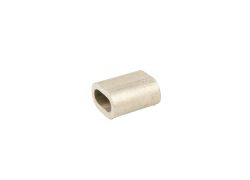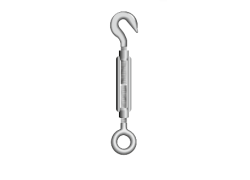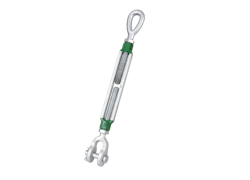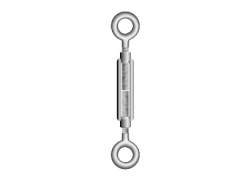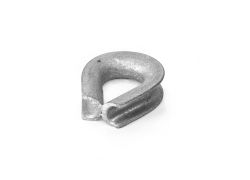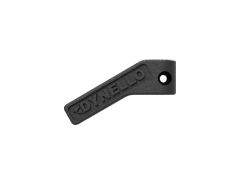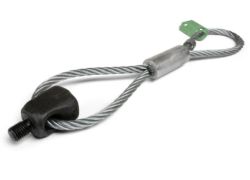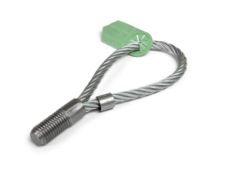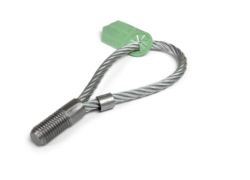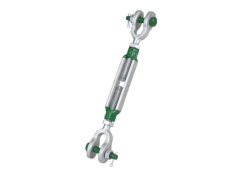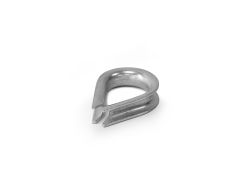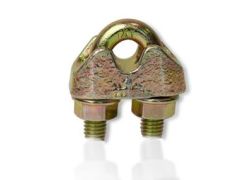CompositionA steel cable may look simple from the outside, but there is a clever composition under the surface that provides the lifting power. To start with, the core is in the middle of the cable. This core can consist of a fiber core, i.e. a core of rope, or a steel core, a core of steel. The strands around the core are made up of wires and are braided around the core as a spiral in the same direction in one or more layers. The core keeps the strands in position. The main difference between the fiber core and the steel core is flexibility. An auger core is more flexible, but a steel core is more powerful. The tensile strength of a steel core steel cable is determined for 90% by the strands and for a steel cable with fiber core this is determined for 100% by the strands. The strength of the steel cable as a whole is determined by the total cross-sectional area and the tensile strength of the material. |
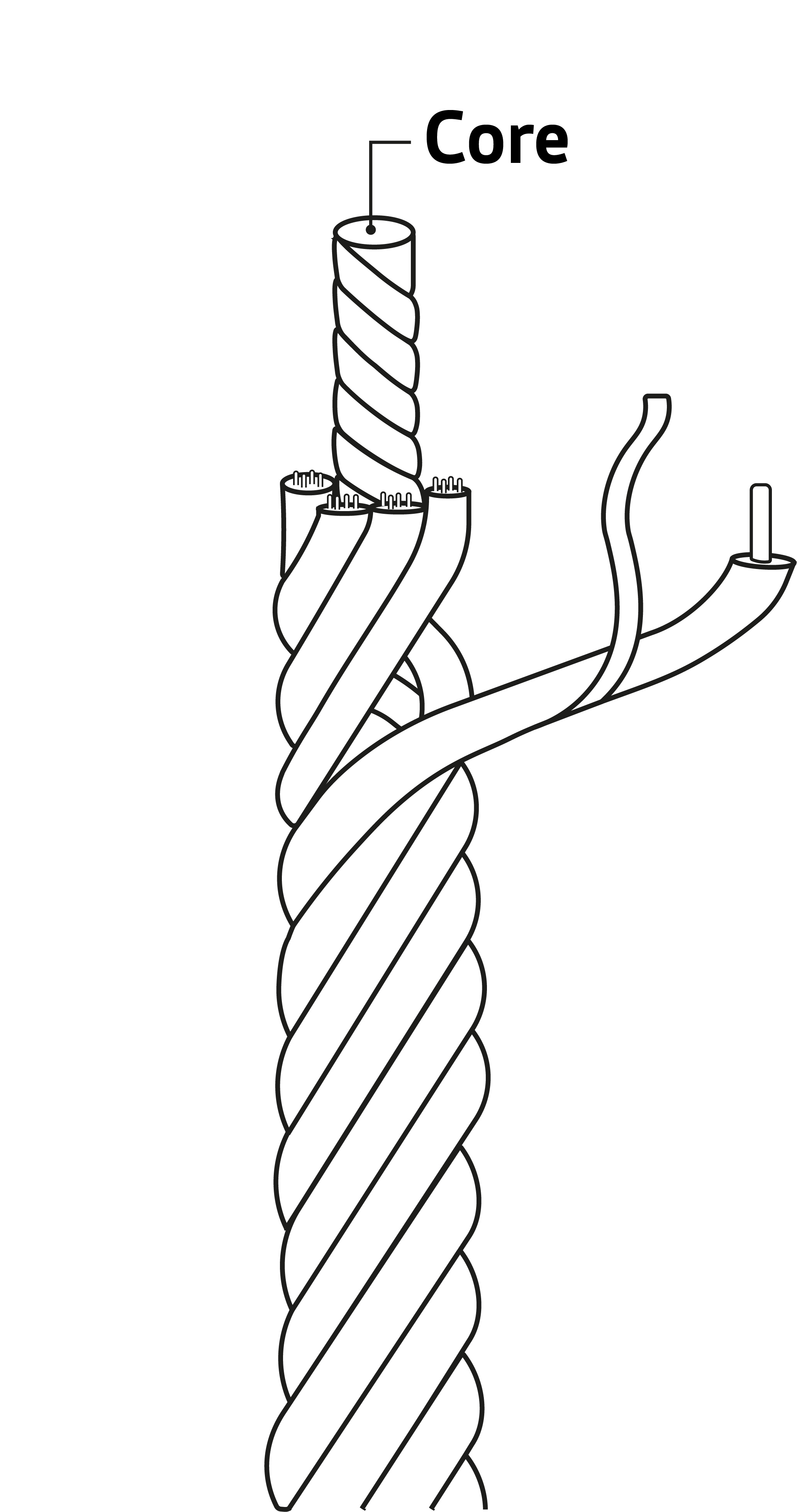 |
FunctionAn endless steel cable, a noose or a grommet are steel cables without an end connection. In order to be able to attach a steel cable to an object to be hoisted, pulled or dragged, a cable with an end connection is often used. The picture on the right is an example of an end connection (Tallurit clamp). Note: the steel cable decreases by 20% in strength when an end connection is present. A steel cable is used to transmit tensile force. This makes the cable suitable for jobs such as hoisting, lifts, winches, cable-stayed bridges and cable cars. |
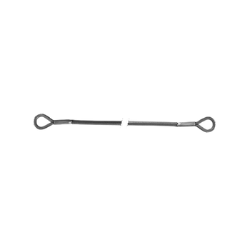 |
The influence of bendingSteel cables can be used for large and small lifting jobs. For large lifting jobs, steel cables are often bent over drums and sheaves. There are many factors that influence the life of the cable. Think of the number of bends, the way the cable bends, the reeving direction and reeving angle. It is difficult to create ideal conditions for the steel cable. For example, the more often the steel cable bends, the higher the risk of material fatigue. In any case, wear on the steel cable cannot be prevented, but it can be limited. The speed at which a steel cable winds is a factor that also influences wear. The slower and easier the cable can move, the more you limit the risks. The more complex the movement of the cable, the more the wear process is accelerated. |
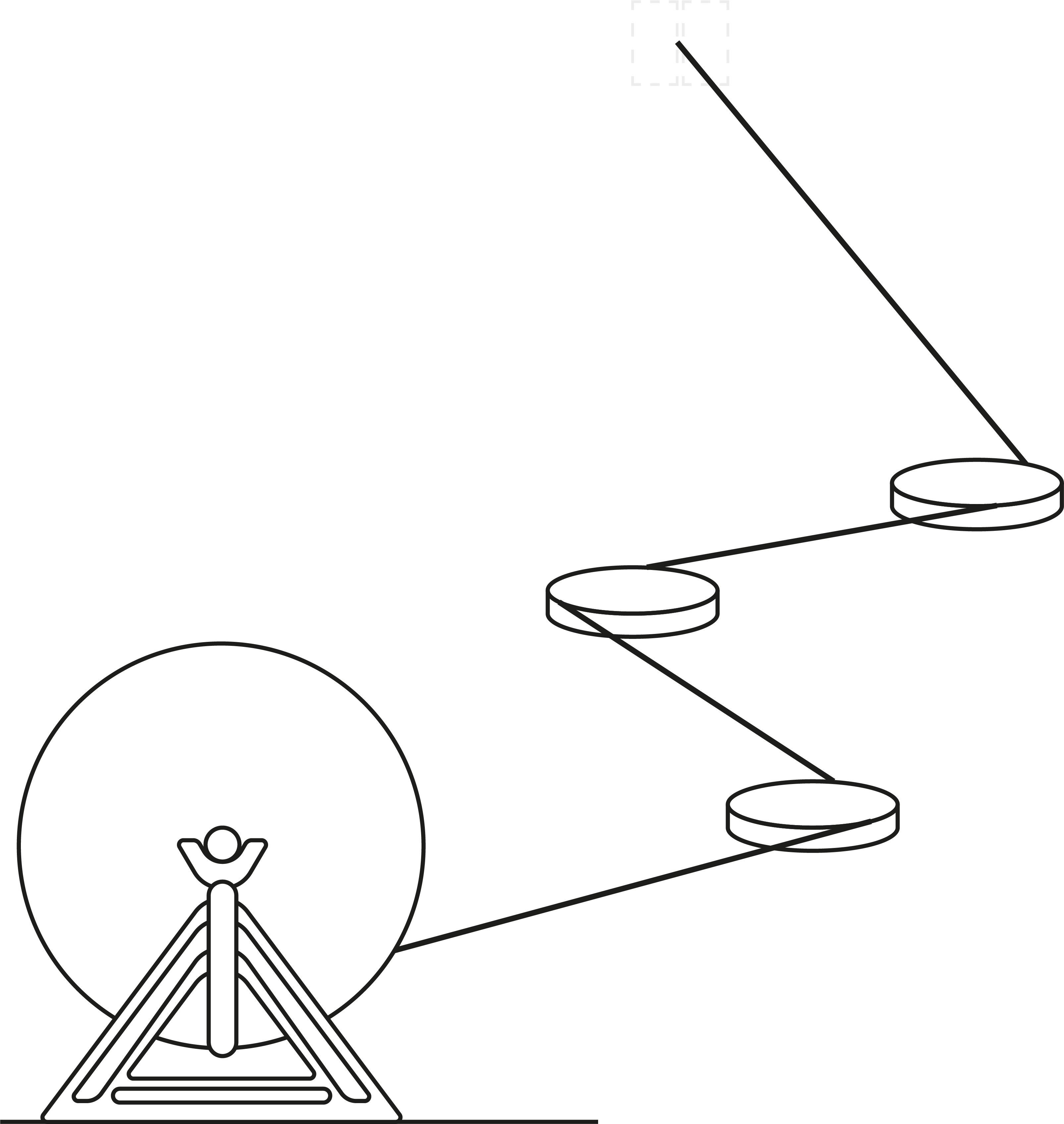 |
PVC sheathedWhen a steel cable has to be used in an environment where hygiene is an important factor, the PVC sheathed variant offers a good solution. Think of an environment such as in the food industry or swimming pools. Due to the PVC layer, dirt cannot adhere directly to the steel. The material is also easy to disinfect. Conversely, the PVC layer makes it difficult for the steel to cause damage to the environment. |
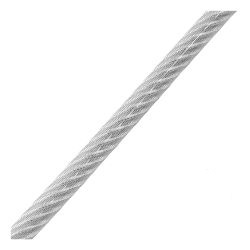 |
Greased and greased-freeCables are available in a grease-free and greased version. A greased cable has a much better protection against corrosion and the cable is slightly more flexible to use. The disadvantage of a greased cable is that it attracts a lot of dirt when you use the cable outside. |
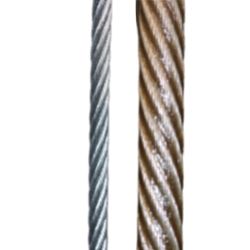 |
Stainless steel or galvanizedWhen you are going to use a steel cable in a corrosion-sensitive environment, a steel cable made of stainless steel offers a good solution. Think of an environment such as the chemical industry and shipping. In this variant, the core as well as the internal and external wires are made of stainless steel. It is good to know that a galvanized steel cable and a stainless steel cable are two different things. With a galvanized steel cable, the steel is electrolytically coated with zinc. This layer slows down the rusting process. The difference is that stainless steel is completely resistant to rust compared to galvanized steel, but is less resistant to fatigue. This can cause the stainless steel cable to break earlier and unexpectedly. Steel, on the other hand, is stronger and more resistant to fatigue. |
|
Assemble steel cableYou will find composite cables in the Liftinggear range. Think of breakaway cables, container cables, steels and winch cables. Usually available from stock and fully assembled and custom-made in our own workshop. Is your ideal length missing or do you need a different composition? We also make steel cables on request. Contact our customer service for the possibilities and suitable advice. |
|
CertificationDo you want to have your cable certified? For an additional cost of €3.50 you will receive a certificate with the steel cable. With a valid certificate you can always demonstrate that the lifting equipment is safe to use. We therefore advise you to have all your steel cables and other lifting equipment certified and to have them re-inspected in time, for the safety of the user(s). |
|
Inspect and approveThe construction and the environment in which the steel cable is used determine the lifespan of the cable. By having the steel cable inspected in time by a certified expert, the status and safety of the cable can be determined. This must be done at least once a year, but with intensive use more checks are desirable and sometimes even mandatory. When you start working with a steel cable, it is always necessary to carry out a check beforehand. We list the points that must be checked as a minimum before use:
|
|
I want to move a load with a steel cable, now what?Step 1: What are the properties of the load?First look at how you want to move the load and what the weight is. Are there pick-up points? Important concepts: Minimum Breaking Load (MBL) The MBL, (minimum breaking load) is the minimum tensile force specified by the manufacturer that a steel cable can withstand before it breaks. Please note that for safety reasons the safe working load is much lower than the minimum breaking load. In addition, weather and application factors have an influence on this. The Working Load Limit (WLL, safe working load) The Working Load Limit (WLL, safe working load) is the maximum force that you can safely lift with steel cables, among other things. This workload is determined by dividing the MBL by the safety factor. For steel cables, the safety factor is 5. In principle, with a cable with an MBL of 10,000 kg, you can safely lift up to 10,000 / 5 = 2,000 kg. Always take the condition of the steel cable into account! Step 2: In what conditions do I work?Are there special circumstances in which you will work with the steel cable? Is the steel cable susceptible to corrosion due to the environment? Perhaps a stainless steel version is suitable. Do you work in an environment where hygiene is important? Then see whether the PVC sheathed variant is a good option. Step 3: Select a suitable steel cable in the webshop. Select a steel cable whose safe working load is higher than the load you are going to lift. This way you can be sure that you can lift safely. Take the safety factor into account. In the webshop you can easily compare the steel cables through the clear categories, product groups and product specifications. Do you have questions or is the steel cable you need missing? Then contact our advisors! |




